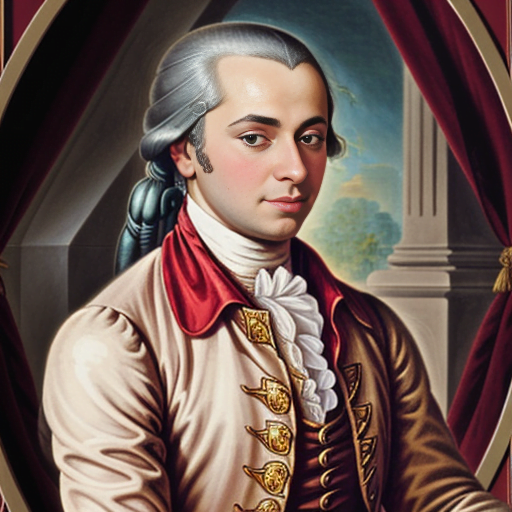Table of Contents
Exploring Music History: From The Middle Ages to Modern Day
Music history is a vast and intricate tapestry that weaves together the evolution of sound, culture, and human expression. By delving into the archives of music history, particularly the Moldenhauer Archives, we can uncover the rich layers of rhythm and resources that have shaped the music we know today. This exploration not only enhances our understanding of different eras but also highlights the connections between rhythm, notation, and the evolution of musical genres.

What is the Importance of Music History in Understanding Different Eras?
How Does Music History Reflect Cultural Changes?
Music history serves as a mirror reflecting the cultural changes that have occurred throughout time. Each era of music, from ancient music to contemporary music, encapsulates the values, beliefs, and social dynamics of its time. For instance, the sacred music of the Middle Ages often mirrored the religious fervor of the period, while the secular music that emerged during the Renaissance showcased the growing humanism and individualism of society. As music historians study these transitions, they reveal how music became a vehicle for expressing the collective consciousness of different cultures, including Western music, folk music, and even the diverse sounds of African, Indian, and Chinese music.
What Are the Key Eras in the History of Music?
The history of music can be divided into several key eras, each characterized by distinct styles and innovations. The ancient music era laid the groundwork for musical development, introducing early forms of notation and rhythm. The Middle Ages followed, marked by the emergence of Gregorian chants and the beginnings of polyphony. The Baroque era brought forth a flourish of instrumental music, with composers like Johann Sebastian Bach and George Frideric Handel pushing the boundaries of musical expression. The Classical era, epitomized by figures such as Mozart, emphasized clarity and balance, leading to the development of the symphony and sonata forms. Romantic music then emerged, characterized by emotional depth and individualism, paving the way for modern music and the diverse genres we enjoy today.
How Has Music Evolved from Ancient Music to Contemporary Music?
The evolution of music from ancient times to the present day is a fascinating journey marked by innovation and adaptation. Ancient music, often tied to rituals and communal gatherings, laid the foundation for more structured forms of music. As musical notation developed, composers began to write music with greater complexity, leading to the rich tapestry of styles seen in the Baroque and Classical eras. The transition to contemporary music has seen the rise of electronic music and new genres, reflecting technological advancements and changing societal norms. This evolution illustrates how music not only adapts to the times but also influences cultural movements, making it a vital aspect of human history.
What Role Does Musical Notation Play in Music History?
What Are the Different Types of Musical Notation Used Throughout History?
Musical notation is a crucial element in the history of music, serving as the written language that allows composers to communicate their ideas. Throughout history, various types of musical notation have emerged, from neumes in the Middle Ages to the more standardized staff notation used today. Each system reflects the musical practices of its time, enabling musicians to perform and interpret music accurately. The evolution of notation has facilitated the preservation of musical works, allowing composers like Arnold Schoenberg and Bach to leave a lasting legacy that continues to influence modern music.
How Did Notation Systems Evolve from the Middle Ages to the Baroque Era?
The evolution of notation systems from the Middle Ages to the Baroque era marks a significant advancement in music history. In the Middle Ages, neumatic notation provided a rudimentary way to indicate pitch and rhythm, primarily for sacred music. As music became more complex, particularly during the Renaissance, the introduction of staff notation allowed for greater precision in musical expression. By the Baroque era, composers utilized this notation to craft intricate works, blending vocal and instrumental music in ways that had never been seen before. This evolution not only enhanced the performance of music but also expanded the possibilities for composition, leading to the rich diversity of styles that characterize Western music.
What Impact Did Notation Have on Composers Like Mozart and Bach?
Notation had a profound impact on composers like Mozart and Johann Sebastian Bach, enabling them to articulate their musical visions with clarity and precision. Mozart, known for his symphonies and operas, utilized the evolving notation systems to create complex, yet accessible, musical forms that resonated with audiences. Bach, on the other hand, pushed the boundaries of musical notation, employing counterpoint and intricate harmonies that showcased his mastery of music theory. The ability to write music down allowed these composers to share their works widely, influencing generations of musicians and solidifying their places in the annals of music history.
How Did the Baroque Era Influence the Development of Classical Music?
What Are the Characteristics of Baroque Music?
The Baroque era, spanning from approximately 1600 to 1750, is characterized by its ornate style and emotional expressiveness. Baroque music often features complex polyphony, where multiple independent melodies intertwine, creating a rich tapestry of sound. The use of ornamentation, dynamic contrasts, and the establishment of tonality were hallmarks of this period. Composers like Bach and Handel wrote music that not only showcased technical prowess but also conveyed deep emotional narratives, setting the stage for the Classical era that followed.
Who Were the Key Composers of the Baroque Era?
Key composers of the Baroque era include Johann Sebastian Bach, George Frideric Handel, and Antonio Vivaldi, each contributing significantly to the development of music during this time. Bach’s mastery of counterpoint and harmony is evident in works such as the “Brandenburg Concertos” and “The Well-Tempered Clavier.” Handel’s operas and oratorios, including “Messiah,” exemplify the dramatic flair of Baroque music. Vivaldi, known for his concertos, particularly “The Four Seasons,” brought a vibrant energy to instrumental music. Together, these composers laid the groundwork for the transition to the Classical era, influencing countless musicians and composers in the process.
How Did Baroque Music Set the Stage for the Classical Era?
Baroque music set the stage for the Classical era by establishing foundational principles of composition and performance that would be further refined in the following period. The emphasis on melody and harmony during the Baroque era paved the way for the clarity and balance that characterized Classical music. The development of forms such as the sonata and symphony during this time allowed composers like Mozart to explore new musical ideas while building on the rich traditions of their Baroque predecessors. This continuity between the two eras illustrates the dynamic nature of music history, where each period influences the next, creating a lineage of artistic expression.
What Are the Connections Between Rhythm and Music History?
How Has Rhythm Changed Across Different Music Eras?
Rhythm has undergone significant transformations throughout the history of music, reflecting the evolving styles and cultural contexts of each era. In ancient music, rhythm was often simple and repetitive, serving as a foundation for communal participation. As music progressed through the Middle Ages and into the Baroque era, rhythmic complexity increased, with composers experimenting with syncopation and varied meter. The Classical era introduced a more structured approach to rhythm, while the Romantic period embraced expressive and free-flowing rhythms. In contemporary music, rhythm continues to evolve, incorporating elements from various genres, including electronic music and popular music, showcasing the dynamic interplay between rhythm and cultural expression.
What Role Does Rhythm Play in Various Music Genres?
Rhythm plays a pivotal role in defining various music genres, influencing their character and emotional impact. In classical music, rhythm provides the framework for structure and form, guiding the flow of symphonies and sonatas. In folk music, rhythm often reflects cultural traditions and communal storytelling, while in popular music, catchy rhythms drive engagement and danceability. Genres like jazz and rock have also pushed the boundaries of rhythm, incorporating improvisation and syncopation to create unique soundscapes. This diversity in rhythmic expression highlights the importance of rhythm as a fundamental element of music history.
How Do Rhythm and Notation Interact in Music Composition?
The interaction between rhythm and notation is essential in music composition, as notation serves as the means to convey rhythmic ideas to performers. Composers meticulously notate rhythms to ensure their musical intentions are accurately realized during performance. The evolution of notation systems has allowed for increasingly complex rhythmic patterns to be documented, enabling composers to experiment with innovative rhythmic structures. This relationship between rhythm and notation not only enhances the clarity of musical works but also fosters creativity, allowing composers to explore new rhythmic territories and push the boundaries of musical expression.
What Resources Are Available for Studying Music History?
How Can the Moldenhauer Archives Enhance Our Understanding of Music History?
The Moldenhauer Archives serve as a vital resource for studying music history, offering a wealth of materials that illuminate the lives and works of composers across various eras. This collection includes manuscripts, letters, and recordings that provide insights into the creative processes of renowned composers such as Bach and Mozart. By examining these primary sources, music historians can gain a deeper understanding of the historical context in which these composers operated, as well as the evolution of musical styles and practices. The archives also highlight the significance of rhythm and notation in shaping the music of their time, making it an invaluable resource for anyone interested in the history of music.
What Other Archives and Libraries Offer Valuable Music Resources?
In addition to the Moldenhauer Archives, numerous other archives and libraries provide valuable resources for studying music history. The Library of Congress, for example, houses an extensive collection of musical scores, recordings, and historical documents that span a wide range of genres and eras. Similarly, institutions like the British Library and the New York Public Library offer rich collections that include rare manuscripts and recordings. These resources are essential for music historians, educators, and students seeking to explore the vast landscape of music history and its cultural significance.
How Can Online Platforms Aid in the Study of Music History?
Online platforms have revolutionized the study of music history, providing access to a wealth of resources that were once limited to physical archives. Websites like Grove Music Online offer comprehensive articles and bibliographies on various aspects of music history, making it easier for researchers to find relevant information. Additionally, digital archives and databases allow users to access rare recordings and manuscripts from the comfort of their homes. This accessibility has democratized the study of music history, enabling a broader audience to engage with the rich tapestry of musical traditions and innovations that have shaped our world.
Additional Reading
More blog posts can be found here. Consider following Breve Music Lessons on Facebook.





